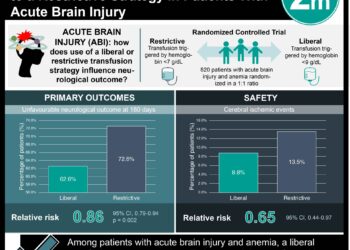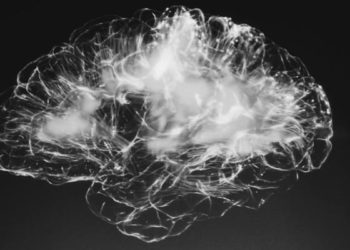Prediction rules for children at low risk of clinically-important traumatic brain injury [Classics Series]
Image: PD
1. Absence of six established predictors was found to have close to 100% negative predictive value for clinically-important traumatic brain injury (ciTBI) when applied to head trauma patients under 18 years of age.
2. An algorithm was proposed, applying these predictors, in order to prevent physicians from using unnecessary computed tomography (CT) in pediatric patients at low risk for ciTBI.
Original Date of Publication: September 15, 2009
Study Rundown: TBI continues to be one of the leading causes of morbidity and mortality among the pediatric population. At the time of this study, CT was the standard imaging technique for identifying TBI patients requiring intervention after head trauma. However, the known increase in malignancy risk associated with CT scans led to this study, identifying patients at low risk for ciTBI in order to reduce unnecessary CT scans. Through the use of a large study cohort from various emergency departments, researchers analyzed the negative predictive values (NPV) and sensitivities associated with a proposed “prediction rule” defined as having none of the identified ciTBI predictors versus having any cTBI predictors. The NPV and sensitivity of this prediction rule was then analyzed with researchers finding an NPV of >98% and sensitivity >94% in the prediction of ciTBI and TBI-negative CT scans in participants of all ages. Despite the fact that researchers did not CT scan all participants and sensitivities were not found to be 100%, this large, adequately powered study found similar results among both derivation and validation participant groups. With their findings, researchers were able to construct algorithms guiding physicians on appropriate CT scans use in head-injured patients. Altered mental status (AMS) and signs of skull fracture were established as branching points for patients at highest risk for ciTBI.
Click to read the study in The Lancet
In-Depth [prospective cohort study]: Data was taken from 42,412 patients (mean age 7.1 years + 5.5) under 18 years of age who had experienced blunt head trauma within 24 hours from presentation to 25 emergency departments (ED) and had Glascow Coma Scale scores of 14-15. Patients were divided into derivation (n = 33,785) and validation groups (n = 8,627) by recruitment date. ciTBI was defined as TBI-related death, need for neurosurgical intervention, intubation for more than one day following injury, or hospital admission for 2 or more nights. Research coordinators reviewed patient records during hospital admissions and completed telephone surveys of patient guardians for follow-up of patients discharged within 90 days of their ED visit. Predictors were chosen based upon established selection criteria and analyses were run to account for baseline development-related radiation risk with children under 2 years of age analyzed separately from those above two years of age. Predictors for children under 2 years of age included: AMS, scalp hematoma, loss of consciousness (LOC), significant mechanism of injury (MOI), potential skull fracture, and changes in behavior. Predictors for those older than two years old included: AMS, LOC, vomiting, significant MOI, signs of basilar skull fracture, and headache. The number of predictors and risk of ciTBI in the derivation and validation groups were then compared.
14,696 (35.5%) of participants underwent CT scan with 780 (5.2%) found to have TBI on imaging and 376 (0.9%) with ciTBI (15.9% required surgical intervention, 0.02% required intubation for more than one day, 0% died from their injury). Among children under two years of age in the validation group, the prediction rule had an NPV of 100% and sensitivity of 100% for ciTBI. Among children over two years of age, this prediction rule had an NPV of 99.95% and sensitivity of 96.8% for ciTBI. In addition, among children under two years of age, the prediction rule had an NPV of 100% and sensitivity of 100% for patients having CT scan without evidence of TBI. Among children older than 2 years of age, the prediction rule had an NPV of 98.4% and sensitivity of 94% for patients having CT scans without evidence of TBI.
© 2013 2minutemedicine.com. All rights reserved. No works may be reproduced without expressed written consent from 2minutemedicine.com. Disclaimer: We present factual information directly from peer reviewed medical journals. No post should be construed as medical advice and is not intended as such by the authors, editors, staff or by 2minutemedicine.com. PLEASE SEE A HEALTHCARE PROVIDER IN YOUR AREA IF YOU SEEK MEDICAL ADVICE OF ANY SORT.







